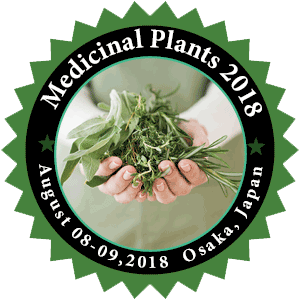Faiza E. E. Salah
University of Gezira, Sudan
Title: P10: Study of the effects of three Botanical Oils on Management of Onion Thrips, Thrips tabaci (Lind) (Thysanoptera: Thripidae) and some ecological aspects, Gezira state, Sudan.
Biography
Biography: Faiza E. E. Salah
Abstract
Onion thrips, Thrips tabaci (Lindeman) (Thysanoptera: Thripidae) is the most serious insect pest of onions in Sudan. This study aimed to evaluate the effects of some botanical oils on thrips infesting onion. Field experiments were conducted at Gezira state during two winter seasons (2015/16-2016/17). Two experiments were conducted in the first season (2015/16) at the experimental farm of the University of Gezira and in the Gezira research Station Farm (GRSF) of the Agricultural Research Corporation (ARC). The third experiment was conducted in the second season (2016/17) for confirmatory studies at the (GRSF) in (ARC) and observation plot of 20 X 40 m2 was used to study the population dynamics of the thrips and natural enemies. The design of the experiments was randomized complete block design (RCBD) with four replications. Cotton oil, castor bean oil and bitter cucumber oil were applied at a concentration of 2.5% in the first season (2015/16). [b1] In the second season 50% upper and lower concentration of castor oil and bitter cucumber oil were applied at the rates of (1.25%, 2.5% and 3.75%). All oil treatments were effective against the onion thrips compared to the untreated control. Significant differences at P < 0.01 in the mean number of insects were found. Bitter cucumber oil was the most effective in reducing the number of thrips compared to the other two oils. A large number of natural enemies of thrips were found at the site associated with the trial. Orius bug and jumping spider were most abundant and by the end of the season these natural enemies had a role to decrease the number of onion thrips. [b2] No significant difference was observed between treatments in yield. This study recommends that, bitter cucumber crude oil at 1.25% concentrations can be used to reduce the number of onion thrips.

